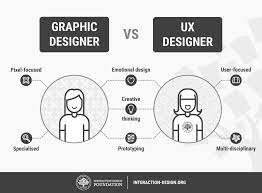
User Experience (UX) design is more than just creating a visually appealing website or app – it’s about understanding the needs and preferences of users to deliver a seamless and enjoyable interaction. In today’s digital landscape, where attention spans are short and competition is fierce, prioritising user experience has become essential for businesses looking to stand out.
At its core, user experience design focuses on enhancing the usability, accessibility, and overall satisfaction of a product or service. It involves a deep understanding of user behaviour, preferences, and pain points to create intuitive interfaces that guide users effortlessly through their journey.
Effective UX design is guided by several key principles:
A well-crafted user experience can have a profound impact on business success. By investing in UX design, businesses can:
As technology continues to evolve at a rapid pace, the field of UX design is also evolving to meet the changing needs of users. From voice interfaces to augmented reality experiences, designers are constantly exploring new ways to create immersive and engaging digital interactions that anticipate and exceed user expectations.
In conclusion, user experience design is not just a trend – it’s a fundamental aspect of creating successful digital products. By prioritising user needs, embracing best practices, and staying ahead of emerging trends, businesses can elevate their offerings and deliver experiences that truly resonate with their audience.
To excel in user experience design, it is crucial to deeply understand the needs and goals of your users. By conducting thorough research and gathering insights into their preferences and motivations, designers can tailor experiences that align with user expectations. This user-centric approach not only enhances usability but also fosters a stronger connection between the product or service and its audience, ultimately leading to greater satisfaction and engagement.
Creating a simple and intuitive design is paramount in user experience design. By minimising complexity and focusing on clarity, businesses can enhance usability and ensure that users can navigate effortlessly through their digital interactions. A clean and straightforward design not only improves user satisfaction but also reduces the risk of confusion or frustration, ultimately leading to a more positive and engaging experience for all users.
Ensuring consistency across all pages and elements is a crucial tip in user experience design. Consistent design elements such as navigation menus, buttons, fonts, and colour schemes help users navigate a website or app seamlessly, creating a sense of familiarity and predictability. By maintaining uniformity in design throughout the user journey, businesses can enhance usability, build trust with users, and reinforce their brand identity. Consistency not only improves the overall user experience but also contributes to a cohesive and harmonious digital presence that leaves a lasting impression on visitors.
In user experience design, prioritising content hierarchy is crucial for facilitating easy navigation and enhancing user engagement. By structuring content in a logical order based on importance and relevance, designers can guide users through the information seamlessly, allowing them to quickly find what they need. Clear hierarchies not only improve usability but also contribute to a more intuitive and satisfying user experience, ultimately leading to increased retention and conversion rates.
In user experience design, utilising white space effectively can significantly enhance readability and overall user experience. By strategically incorporating ample white space around text and design elements, designers can create a sense of visual breathing room that allows content to stand out and be easily digestible for users. White space not only improves readability by reducing cognitive overload but also adds a touch of elegance and sophistication to the design, ultimately contributing to a more engaging and enjoyable user interaction.
In the realm of user experience design, a crucial tip is to prioritise mobile responsiveness. With the majority of users accessing websites and apps on their mobile devices, ensuring a seamless experience across various screen sizes and resolutions is paramount. By optimising for mobile responsiveness, designers can enhance accessibility, improve usability, and ultimately deliver a consistent and engaging experience that caters to the needs of on-the-go users.
In user experience design, it is crucial to include clear calls to action that guide users towards desired actions. Whether it’s prompting users to sign up for a newsletter, make a purchase, or explore more content, well-defined calls to action serve as signposts that direct users on their journey through a website or app. By making these calls to action prominent, visually appealing, and easy to understand, designers can enhance user engagement and encourage desired interactions, ultimately improving the overall user experience.
To enhance the user experience of a digital product, gathering feedback from users is crucial for continuous improvement. By soliciting insights directly from those who interact with the product, designers can gain valuable perspectives on what works well and what can be enhanced. This feedback loop not only helps identify pain points and usability issues but also provides invaluable guidance for iterative design improvements that ultimately lead to a more user-friendly and satisfying experience.
Testing your design with real users is a crucial step in the user experience design process. By observing how real users interact with your product, you can uncover valuable insights and identify potential pain points that may not be apparent during the design phase. This hands-on approach allows you to address usability issues, refine user flows, and ultimately create a more intuitive and satisfying experience for your target audience. Real user testing not only validates your design decisions but also ensures that your product resonates with its intended users, leading to higher levels of engagement and satisfaction.